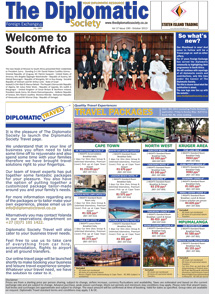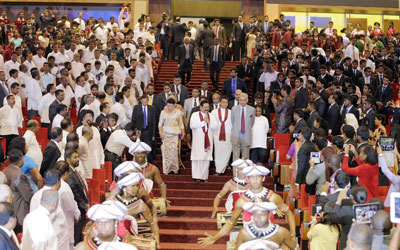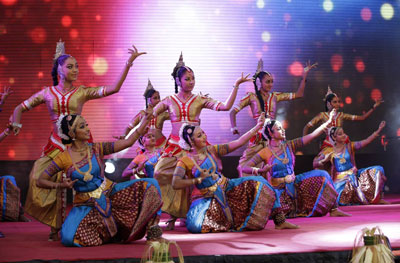War to Peace - the Role of the Sri Lankan Security Forces in the
Development process in Killinochchi
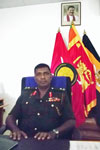 Exclusive Interview with Major General Udaya Perera.
Exclusive Interview with Major General Udaya Perera.
In
an exclusive interview Srimal
Fernando, Global Editor for
Foreign Exchange Diplomatic Society (FETDS), was pleased to interview Major
General Udaya Perera, Commander, Security Force Headquarters, Killinochchi in
the Northern Province of Sri Lanka. The experienced veteran Sri Lankan army
general with high academic credentials and years of military experience
during the three decade old conflict and after was a also the diplomat
representing Sri Lanka as a Deputy High Commissioner to Malaysia. The
Global Editor, in a face to face engagement with the Major General at his
Headquarters in Killinochchi finds out about his military experience, the way
forward towards reconciliation, the collaboration provided by the
Security forces to the conflict affected people of Killinochchi district, post
conflict development, state of civil-military relations and issues, overview
about the Harmony Centre and the greatest hopes for peace and harmony.
Srimal Fernando (SF)
: Major General Udaya Perera you have been with the Sri Lankan Army for a
long time. As an experienced veteran Sri Lankan army general with years of
experience in pre and post conflict period can you briefly tell us about your
background?
Major
General (MG) : I joined the army with the conflict. Initially I
joined the Sri Lankan army in 1981 to Kotelawala Defense Academy (KDA), and
transferred myself to the Sri Lankan Military Academy. As soon as I passed it was
a conflict. In June 1983 I passed out and with the precipitating ambush on 23rd
July 1983 in Jaffna where everything changed. Basically I am an infantry
officer. From that day onwards I have been leading troops. As an officer I
started from Ampara joined an infantry called Vijayabahu Regiment. With the
Vijayabahu Regiment with Rajarata Rifles the Gajaba Regiment (GR) was
formed. I served in the Gajaba Regiment (GR) and participated in all the
military operations. If I talk about the milestones I commanded the Gajaba
Regiment (GR) in Jaffna. Took part in Riviresa I,II, III and then I
proceeded to staff College, Batalanda. From there I went to Kotelawala Defense
Academy (KDA), as a Commanding Officer. From there I went for my second staff
posting to Wellington in India. At Second Staff College I obtained a
Masters in Strategic studies from University of Madras. After returning to Sri
Lanka I was a teacher at Defense Services College Sri Lanka. After that I
commanded the Elite air mobile Brigade in Jaffna. After commanding the air
mobile brigade I proceeded to United States to do a counter terrorism
degree. I was in Washington DC at the National Defense University. Then I
came back as a Brigadier General Staff for a very short period in Vavuniya
Wanni Security Forces Head Quarters. I then went to the Army Head Quarters as
Director Training again for a very short period. Then I took the most crucial
job as Director Military Operations in August 2006 that went on till 19th April
2009. This was the period we started the “Humanitarian Operation”. The
role of Director Operation is a very crucial and most of the strategic level
planning and implementation took off from here. It was centrally planned and
coordinated from Colombo. Then I was offered a Diplomatic posting in Malaysia.
I was the first wing officer to get an appointment as a Deputy High
Commissioner.
There
also I had a very crucial role because the Liberation Tigers of Tamil Eelam
(LTTE) was very active. After Velupillai Prabhakaran died the person who took
over the reigns was Kumaran Pathmanathan. The LTTE network was very strong.
Firstly dismantling the entire network and secondly winning the hearts and the
minds of the diaspora was my priority. Even today except for few Tamils
of Sri Lankan origin of the Malaysian diaspora supports the Government efforts
in rehabilitation and in reconstruction. They are a very influential wealthy
lot. After completing my assignment in June 2011 I proceeded to Army War
College in USA. There also I became the President of the union leading 79
nations. Obtained my second Masters there too. I was awarded a
Alumina special life time award for the performance and leadership. Then I came
to Kilinochchi and took over the Killinochchi command. This is briefly my
military life.
SF
: “The Sri Lankan conflict prevailed for nearly three decades. It
was proved to be an extremely sobering experience which caused so much
suffering for the people of the country. In 2009, Sri Lanka Government was able
to achieve victory over terrorism that had changed the countries’ socio and
economic conditions for many years”.
To
avoid repeating this cycle of conflict what should be the non-military strategy
that should be adopted and the way forward towards reconciliation?
MG
: When we talk about the way forward for a small developing country like
Sri Lanka, any strategy should be a Government strategy. The Government
machinery including the military has a role. Every segment of the Government
has a role in the overall strategy. In that strategy to achieve economic
development while trying everything possible to achieve economic prosperity the
political issues that are put forward by the various segments of the society
should be taken cared of and resolved.
Why I say the main thing is
economics, my diplomatic experience in Malaysia has shown that the economic
prosperity can resolve many issues. Even in Malaysia the original Malaysians
called Bumi Puthra are considered to get more privileges than other segments of
the society. But still all of them work together because of economic
prosperity. See how to achieve prosperity through whole of government strategy
that is a national strategy. In a third world country such as Sri lanka
the military is very professional and is a fully volunteered citizen’s
army. These types of armies are responsible to be a part of the
development process. Not like the western armies. Western armies are trained to
wage war in their countries and in other countries. Our army is trained to
prevent wars because it is a citizen’s army. Therefore this army has a great
responsibility in the development process.
SF
“During the post conflict period in Sri Lanka displaced persons began to leave
the Internally Displaced Camps (IDP) for areas closer to their original homes
in the North and Eastern provinces of Sri Lanka. However, upon return the
people were faced with various problems including lack of basic services,
missed educational and economic opportunities, social and psychological
problems.”
What
level of cooperation or collaboration towards the conflict affected people of
the Killinochchi district has been provided by the Security
forces in the past four years ?
MG
: Now if you take Kilinochchi it is the place where most crucial battles took
place. We fought a “hybrid terrorist organization”. If I further explain why it
is a hybrid terrorist organization, this is a terrorist organization that had
three wings; land, sea going force and a very rudimentary air force. The LTTE
strategy was a hybrid strategy. Whenever they wanted, whenever the conditions
and the environment demanded they used terrorist tactics. That’s
terrorism. Whenever the conditions demanded they used insurgency and
whenever the conditions demanded and the situation demanded they used conventional
war. They used all these three very effectively. When we liberated the Eastern
Province it was insurgency and terrorism. When it comes to the Northern sector
this was a conventional fortified defense with layers and layers. If we
penetrate one line there was another line. When we penetrate that particular
defense line there is another one. They learned tactics from India too,
which is “Ditch Cumban” defense style. If you take Kilinochchi it was like a
fortress because it was LTTE headquarters. In a conventional arrangement they
could defend this place. They called it an “impregnable” defense line that was
so strong. So you can imagine for us to come and penetrate the
defense of that nature we also had to use lot of fire power and conventional
tactics here in Kilinochchi. For our advantage they have taken the civilians
out of Kilinochchi town periphery. So it was a tough battle. It was a high
intensity battle with a high rate of attrition. Both sides used conventional
tactics and ultimately we were able to liberate Kilinochchi. Now you can
imagine what happens to a township when it goes through a high intensity
battle. So it was a ghost city and all the buildings were vertically destroyed
due to collateral damage and also due to the damage done by LTTE to put up
defenses.
We
took out a ghost town without buildings or people. So 133,000 people with
50,000 children got displaced. Because the terrorist also took these
people with them. Every man, women and child today you see in Kilinochchi are
resettled. So the Military played an active role in resettling them. Firstly we
had to demine the area and demining is not an easy task. Because the terrorist
which used conventional tactics laying of mines are concerned are not
conventional mines. In conventional mines you have about 35 grams of explosives
in an anti personal mine. But they have used 125 grams of explosives. It was
the First challenge. Secondly when conventional armies lay mines they have a
plan . It is easy to detect mines in the laying of mines in the sketch. When
Terrorist groups lay mines they do not have a plan. However within a very
short period we were able to demine the entire area. The entire area means the
area which is required to resettle people. We demined the area as early as
possible. The military took the lead and did it. In order to resettle we
had to reconstruct all the houses and then give food and water. We had to clean
all the wells. Even the toilets were destroyed. I think this is the only
army in the world that went to the extent of washing toilets of the civilians.
In order to reconstruct them the army took the lead in reconstructing and
providing shelter. 44,000 families were to be resettled and next
12,000 carders surrendered to the army. Out of that 3000 are from
Kilinochchi. Through the national efforts there again the army took the
lead. These carders were rehabilitated and they were re integrated to the
society. The Army being an entity that has the capacity, capabilities
than other arms of the government took a lead in the reconciliation
purpose. I am happy to say even reconciliation work has been very very
successful in Kilinochchi. There is a huge debate because one
school of thought says that reconciliation is not working and
the other is saying reconciliation is very effective process
as far as the Northern area is concerned. I can prove reconciliation has
worked out in Kilinochchi. Because in 2012 we launched a recruitment
drive to take women to the army. In that drive 100 Tamil girls joined the army
and few are ex combatants. This is highly good proof Sri Lankas
reconciliation is working. I rather call the 6 R process. First R when
constituting the government rule in the LTTE controlled areas was the first
task. Second R is reconstruction. The third R is resettlement the fourth R is
Rehabilitation. The fifth R is Reintegration and the sixth R is
Reconciliation. So in this 6 R process the army not only has given the fullest
support to the government but has taken the lead role. Now if you take
Kilinochchi it is a brand new Kilinochchi. It was not the Kilinochchi that was
there before 1983. Not the Kilinochchi that was there during the conflict. The
New Kilinochchi is an effort of the Sri Lankan Government.
4
SF : “Post conflict development is the significant task of
transition from war to peace and economic development. In this process
Government has to consider several things including re-establishment of
democracy, decentralisation, managing the development processes, building
government capacities in conflict areas, Youth development, reintegration,
reconciliation, rehabilitation, Government policy reforms and liberalisation if
necessary”.
From the above mentioned facts can
you briefly tell us what significant task Killinochchi Security forces
and the Sri Lankan Government was able to achieve in the post
conflict period in the Killinochchi district ?
MG : Whatever you have pronounced we
have achieved in various degrees. I will first talk about democracy. If
you count the number of elections that were held after the conflict ended,
there are many. We had the Presidential Election. Then we had the Pradeshiya
Sabha (PS) elections. Then we had the Provincial Council Elections. We also had
the General Elections before the Provincial Council Elections. See the number
of elections that were held in the war-torn city after the conflict ended. Out
of this the major step the government was to hold the Provincial Council
elections after fully stabilizing the area. The First Example of
achievement for decentralizing was holding the Provincial Council Elections.
After holding the Provincial Council Elections a provincial governance was
established and they have started their activities.
Then
building government capacities is even during the war though we called it
uncontrolled areas even those days. Government tentacles were here in the form
of Government agents, divisional secretaries, Grama Seva Niladaries,
Government doctors, teachers you name it all those government servants
were paid right through out the conflict period. It was part of the Government
strategy. So you have some hold in uncontrolled areas in order to defeat
terrorist theory running a counter state. The capacities which were there
may have been nullified to a certain extent by the LTTE due to their tactics.
But still they were there. After the conflict it was a matter of giving them
their proper place and giving them to do what they want. Capacity building is
concerned this area runs the same way as other areas of the country is run by the
government. Government is working to its fullest capacity.
There is a vision on youth also.
Youth development process starts from rehabilitation. Rehabilitation is done
for the Ex carders. So for them vocational training for the youth, education
for the children was a part of rehabilitation. As far as other youth are
concerned unemployment being an issue the government has taken many steps.
Vocational training to improve their skills and also the civil society has come
in a big way in order to improve areas like sports, cultural activities,
etc. The army with its capacity is carrying out vocational training in a
big way. The army through its harmony Centers in Kilinochchi is
conducting many programmes for the development or capacity building. One major
thing our women’s battalion does is empowering the women. It has been very
successful. The empowering programme is done specially because there are many
widows. They have become a very vulnerable lot. Therefore we take great efforts
to empower these women through various programmes
SF
What is the state of civil-military relations in the Killinochchi
District ? What are the key civil-military issues that need to be address in
the same area?
MG
: In a post conflict scenario as I told you earlier the capacity the
military has got is not there with any other Government institute.
Therefore to my understanding the role of the military in development work we
have to maintain a very close relationship with the citizens. The Civil
-military relations are of two parts. The first part is the
relationship we have with the bureaucracy and the government officials to carry
out development work and to support the 5 R Government plan. Here what we do is
we support the civilian establishment to achieve civilian goals.
Now
in the second part of civil military relations that is the relationship with
the community. In a post conflict scenario many government institutes were
dis-functioning and the military had to fill that vacuum. After filling
that vacuum the community expected the military to perform their task
continuously due to confidence they got with the military. When we want to
reduce certain camps from a certain area the request comes from the community
not to remove the camps. Because they have got so inter dependable. The
Community has got used to the military camps for all their needs. Military will
praise them with both hands for the community and won the hearts and minds of
the community. For Example whenever a person is sick she goes to the military
before going to the civilian doctor. Whenever there is a need of transporting
an expected mother they go to the military camp and request. Whenever a child
doesn’t have a pen or pencil due to poverty they go to the military
without fear and ask for pen or pencil. So this is the relationship
we have with the community.
SF :Can you give us a brief overview
about the Harmony Centre in Killinochchi ?
MG
: The Harmony Center was basically established by the army. Our approach to
achieving this goal was through an array of projects. What we expect through
these projects firstly to empower the community. Secondly to link the Northern
Community with the Southern community. One good example is the scholarship
programme under the education project for 33 ,340 school going children
in Kilinochchi. Our desire is to provide scholarships to all these children and
establish a link with the South through this scholarship. If I explain further
already we have linked 2500 Southern families through the foster parent scholarship
scheme with 2500 students or school going children from Kilinochchi. We also
have linked Kilinochchi schools with some schools in the south. So likewise we
have other projects like agriculture, women empowerment, employment
for the unemployed, culture, sports and many other activities. We also use
information as a tool of harmony to improve the quality of life of Kilinochchi
people. Harmony theater in the Harmony center provides an opportunity for the
people to watch films of high quality. 40 centers were established to provide
24 x 7 television coverage.
SF : What are your greatest
hopes for peace and harmony among all people of Sri Lanka?
MG : The greatest hope is to achieve
permanent peace. Vulnerable peace that we enjoy toady should be converted to
eternal peace. Why I said vulnerable peace there are certain segments in the
international community who are still carrying the LTTE flag and the Ideology
instigating local politicians to continue the separatist ideology by funding
and facilitating it through various ways and means. Organisations such as
TGTE, BTF , TCC , WTF and head quarter groups are striving hard to revive the
LTTE in order to establish a separate state. Therefore this is a threat to
peace and security in Sri Lanka. I hope the International community will
understand the security threats pose for destabilizing the country like Sri
Lanka to take steps and actions against that instigates terrorism in Sri Lanka
which shall be a threat to global peace and security.
SF :Thank you Major General Udaya Perera for giving us this
opportunity to have this interview with you.
Source
Asia Edition
Africa Edition


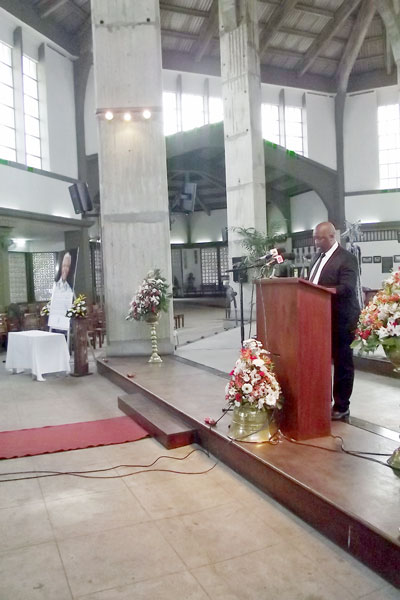


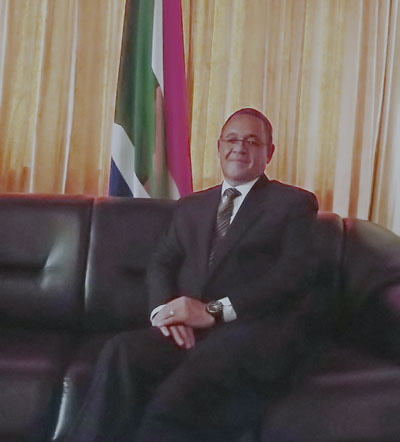
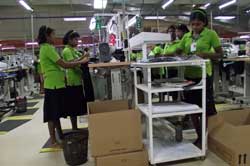
 The Global Editor for Foreign Exchange Diplomatic Society (FETDS), on a visit to the Killinochchi “Vaanavil” factory operated under MAS Active (Pvt) Ltd met Ms Shyamali Liyanage, Manager Human Resources and Administration. Ms Liyanage, a NDT graduate from the University of Moratuwa in Textile Clothing Engineering, has been working with MAS Holdings at various locations in Sri Lanka for more than ten years. In an exclusive interview with the Global Editor, Ms Liyanage said, “Most of the girls in the age group of 18 to 30 years who are working here were affected by the conflict. Among the total workforce there are some ex combatants too.”
The Global Editor for Foreign Exchange Diplomatic Society (FETDS), on a visit to the Killinochchi “Vaanavil” factory operated under MAS Active (Pvt) Ltd met Ms Shyamali Liyanage, Manager Human Resources and Administration. Ms Liyanage, a NDT graduate from the University of Moratuwa in Textile Clothing Engineering, has been working with MAS Holdings at various locations in Sri Lanka for more than ten years. In an exclusive interview with the Global Editor, Ms Liyanage said, “Most of the girls in the age group of 18 to 30 years who are working here were affected by the conflict. Among the total workforce there are some ex combatants too.”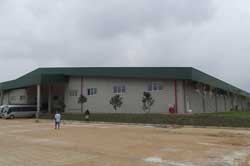
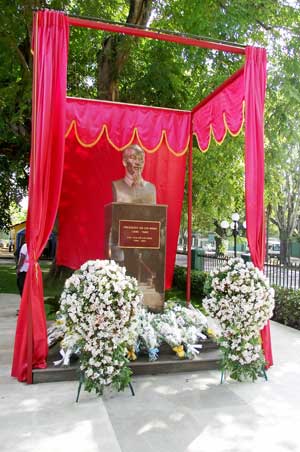
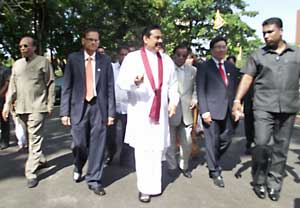


.gif)






